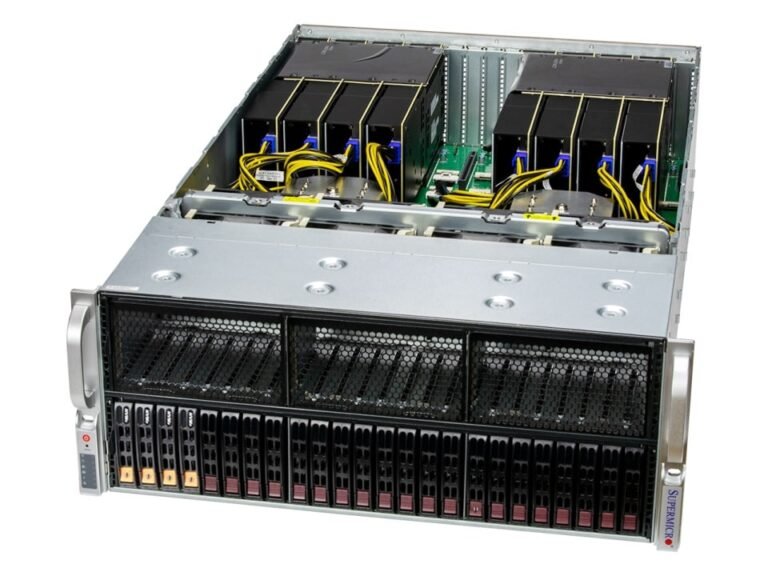Advanced AI chips are arguably the most sought-after tools in the global technology race. These processors—like NVIDIA’s H100 or A100—are essential to training and running large-scale AI models. They’re used in everything from climate simulations and biomedical research to next-gen language models and autonomous systems. Their performance and efficiency make them a cornerstone of technological leadership.
But as demand for these chips grows, so does the tension around who gets access to them. We’re witnessing what could be called a soft war—one where compute power, not combat power, defines strategic advantage. And at the center of this tension is the complex, high-stakes relationship between the United States and China.
A recent report by Erich Grunewald and Tim Fist, published by the Center for a New American Security, looks at this issue from the angle of export enforcement. The U.S. has placed controls on certain high-end AI chips, aiming to limit their availability to countries where their use might raise national security concerns—most notably, China. The policy is intended to slow the development of advanced military and surveillance applications while maintaining an edge in cutting-edge AI.
But enforcement of these controls is proving to be a challenge.
Open-source research and reporting from several media outlets—including Reuters, the New York Times, and Bloomberg—suggest that a substantial number of restricted chips may still be entering China through indirect channels. Some estimates suggest that around 140,000 advanced AI chips made their way into the country in 2024 despite export restrictions. That number, while not overwhelming in volume, may represent around six percent of China’s inference computing capacity and up to ten percent of its training capacity. It’s enough to meaningfully impact development timelines.
What makes this situation complex is that chip smuggling doesn’t necessarily involve cloak-and-dagger operations. In many cases, the chips are shipped to intermediary countries—like Singapore, Malaysia, or the UAE—where export controls may not be as tightly enforced or where re-exporting is easier to mask. From there, the components can be rerouted, sold online, or delivered to end users in China through informal or indirect distribution networks.
This isn’t an issue unique to any one country. Dual-use technologies—those that have both civilian and military applications—have always challenged regulatory frameworks. In the case of AI chips, their versatility makes them especially difficult to monitor. A GPU used for language model training today could be used for high-fidelity simulations or data analysis in a very different context tomorrow.
The report highlights that enforcement agencies like the U.S. Bureau of Industry and Security are under-resourced relative to the scale of the challenge. In some cases, the value of a single shipment of restricted chips—especially in large quantities—can exceed the entire annual enforcement budget of the agency tasked with stopping them. That’s not a flaw of intention, but a gap in capacity.
One proposed solution is for manufacturers and distributors to enhance their visibility into downstream supply chains. Some companies are experimenting with chips that can verify their geographic location, making it harder for them to be used outside of authorized zones. Others suggest that stronger legal and financial incentives for reporting suspicious activity could help close enforcement gaps.
But this isn’t just about regulation or trade compliance. At its heart, this is a strategic competition over who can scale AI faster, more securely, and more efficiently. Advanced chips are becoming the foundation for not just economic progress, but also strategic capabilities. Nations that can access and harness this compute power—either directly or through partnerships—are better positioned to lead in AI research, innovation, and deployment.
And that brings us to a broader question: how does this race affect the rest of the world, particularly developing economies?
In many ways, the chip-centered competition between the U.S. and China leaves smaller nations—especially those in Africa, Latin America, Southeast Asia, and parts of the Middle East—on the margins of a race they didn’t sign up for but are increasingly affected by. These countries may host transshipment points, offer cloud hosting or logistical services, or act as third-party buyers in a global resale ecosystem. But most lack direct access to high-performance compute infrastructure. When global supply tightens—due to export controls, political tensions, or demand shocks—it’s often these regions that feel the pinch first.
For nations trying to build their own AI capacity—for agriculture, healthcare, climate monitoring, or education—being locked out of the high-end chip market delays progress and deepens digital inequality. At the same time, they may be pressured to take sides in the U.S.–China technology rivalry, particularly when infrastructure investments, cloud partnerships, or 5G and data center deals are on the table.
This isn’t to say developing countries are powerless. Some are already exploring regional cloud alliances, open-source AI tools, or diplomatic efforts to secure neutral access to computing infrastructure. But it does mean that the global chip landscape is not just a battleground for great powers—it’s a terrain where emerging nations must carefully navigate opportunity, dependency, and autonomy.
Zooming back out, it’s clear that chips now sit at the center of global power structures. They are no longer just enablers of productivity—they’re geopolitical assets. And how countries manage their flow, regulate their trade, and collaborate—or compete—around them will shape not just AI’s future, but the world’s.
So while the headlines may focus on new models or software breakthroughs, it’s worth remembering that underneath it all, silicon still matters. And in a world increasingly defined by intelligence—both artificial and strategic—compute might just be the next oil.


